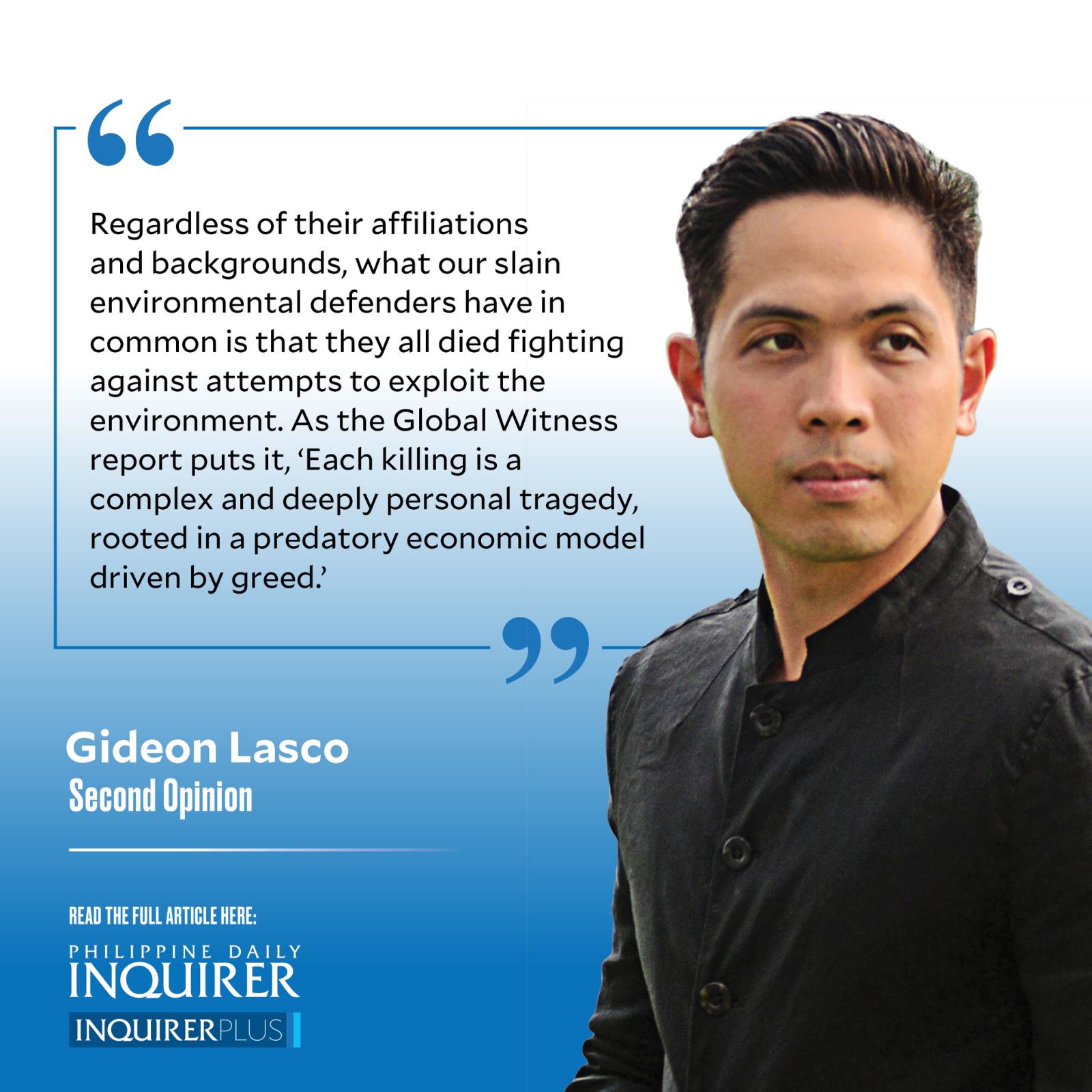Defending our environmental defenders
On Aug. 23, 2020, Bae Merlin Ansabu Celis, a lumad Manobo leader, was brutally murdered in Magpet, Cotabato. “Four unknown men shot her, slashed her throat, and removed her eyes with a machete,” per one report. Celis was an advocate for indigenous rights and an opponent of illegal logging and other exploitative activities.
On Sept. 26, 2020, patrolmen Jessie Golondrina and Edwin Fernando Velarde were killed in a gunfight while trying to apprehend timber poachers in Northern Samar and secure the poachers’ Masbate-bound pump boat with 11,000 board feet of undocumented lauan.
Article continues after this advertisementOn Dec. 30, 2020, nine indigenous Tumandok leaders in Panay island were killed by Philippine authorities who claimed they were insurgents who resisted arrest—“nanlaban.” The nine—Roy Giganto, Reynaldo Katipunan, Galson Catamin, Eliseo Gayas Jr., Maurito Diaz, Artilito Katipunan, Mario Aguirre, Jomar Vidal, and Rolando Diaz—had been opposing a proposed P20-billion multipurpose mega dam project in Capiz that would displace people in their hometown.
These are just some of the cases referenced in the Global Witness report released this week that listed 29 documented killings in the Philippines last year, placing us yet again in a notorious list of deadliest countries for “environmental defenders.” Because such reports rely on media and NGO reports, there are likely more undocumented ones, given the “fog of COVID” that has prevented journalists and environmental advocates alike from doing their work.
Some of them, like Golondrina and Velarde, were actually government authorities, either as part of the police force or affiliated with the DENR. Danilo Pascasio, a forester with the DENR, very nearly made it to the list when he was attacked by a suspected illegal logger in front of his house in Baler, Aurora, on Sept. 27, just days after he was arrested and had posted bail.Others belonged to progressive organizations and whose activism focused on indigenous and land rights.
Article continues after this advertisementSignificantly, a majority were part of indigenous communities defending their ancestral lands against powerful interests. In my own research on forest protection in Bukidnon, I saw how passionate most indigenous forest guards were about protecting their forests, but they receive very little support from the government, and they feel very vulnerable, perceiving themselves to be virtually defenseless against powerful forces.
Regardless of their affiliations and backgrounds, what our slain environmental defenders have in common is that they all died fighting against attempts to exploit the environment. As the Global Witness report puts it, “Each killing is a complex and deeply personal tragedy, rooted in a predatory economic model driven by greed.”
Various government agencies have vowed to go after their perpetrators, but by its action or inaction, the government itself has set the stage for these killings. “As Duterte’s authoritarianism manifests in the countryside,” the anthropologist Wolfram Dressler grimly observes in this month’s special issue of IUCN-CEESP’s Policy Matters, “those who harass and kill defenders do so more frequently, brazenly and violently with a growing sense of impunity.” Significantly, the government has actually supported the very exploitation that the environmental defenders have rallied against, from the Kaliwa Dam to the mining project in Tampakan.
Moreover, justice has been lamentably slow, and very few perpetrators of environmental crimes have been brought to justice, even as the blood of Gerry Ortega, Leonard Co, Jojo Malinao, and many others continue to cry for it.
Moving forward, these killings should serve to remind us that our warm feelings for the environment should translate toward solidarity, at the very least, with those who defend it. Even self-professed nature lovers can be guilty of this sometimes: We have been quick to condemn people who throw trash on the trail, but slow to campaign against those who destroy the mountain. Aside from just advocating for access to the outdoors during the pandemic, we should also raise awareness that people are using the pandemic to destroy it, our campaign becoming part of what Dressler terms “a reinvigorated civil society with strong counter-movements.”
Indigenous issues merit particular action and attention. Today, questions involving cultural appropriation—the Whang-Od controversy, for instance—garner a lot of rightful traction and media coverage. But land is at the heart of indigenous rights, and if we are to truly and meaningfully support our indigenous communities, we have to take ownership not of their tattoos, but of their scars.
—————-
glasco@inquirer.com.ph

















